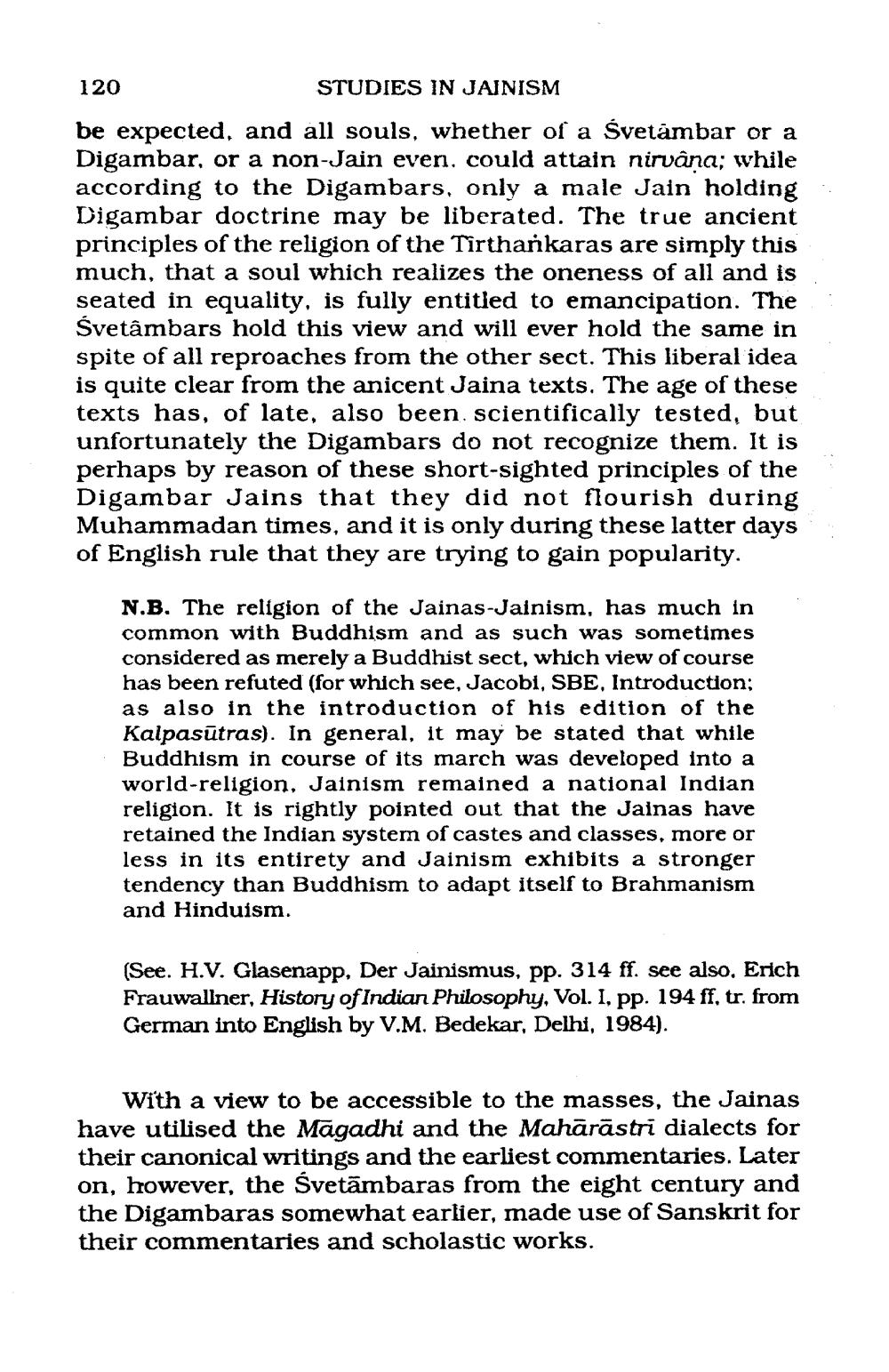________________
120
STUDIES IN JAINISM be expected, and all souls, whether of a svetambar or a Digambar, or a non-Jain even. could attain nirvana; while according to the Digambars, only a male Jain holding Digambar doctrine may be liberated. The true ancient principles of the religion of the Tirthařkaras are simply this much, that a soul which realizes the oneness of all and is seated in equality, is fully entitled to emancipation. The Śvetâmbars hold this view and will ever hold the same in spite of all reproaches from the other sect. This liberal idea is quite clear from the anicent Jaina texts. The age of these texts has, of late, also been. scientifically tested, but unfortunately the Digambars do not recognize them. It is perhaps by reason of these short-sighted principles of the Digambar Jains that they did not flourish during Muhammadan times, and it is only during these latter days of English rule that they are trying to gain popularity.
N.B. The religion of the Jainas-Jainism, has much in common with Buddhism and as such was sometimes considered as merely a Buddhist sect, which view of course has been refuted (for which see, Jacobi, SBE, Introduction; as also in the introduction of his edition of the Kalpasūtras). In general, it may be stated that while Buddhism in course of its march was developed into a world-religion, Jainism remained a national Indian religion. It is rightly pointed out that the Jalnas have retained the Indian system of castes and classes, more or less in its entirety and Jainism exhibits a stronger tendency than Buddhism to adapt itself to Brahmanism and Hinduism.
Buddhism is. In general, it m of his editio
(See. H.V. Glasenapp, Der Jainismus, pp. 314 ff. see also. Erich Frauwallner, History of Indian Philosophy, Vol. I, pp. 194 ff, tr. from German into English by V.M. Bedekar, Delhi, 1984).
With a view to be accessible to the masses, the Jainas have utilised the Magadhi and the Mahārāstri dialects for their canonical writings and the earliest commentaries. Later on, however, the Svetāmbaras from the eight century and the Digambaras somewhat earlier, made use of Sanskrit for their commentaries and scholastic works.




